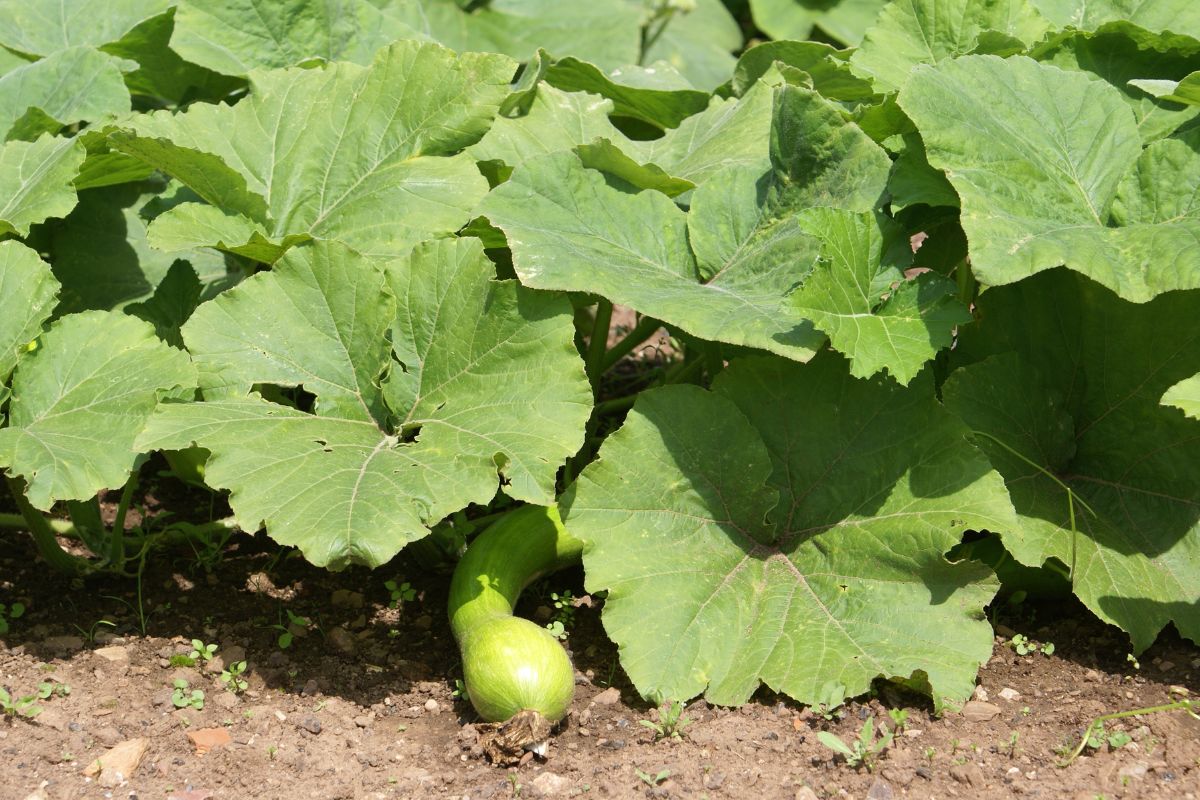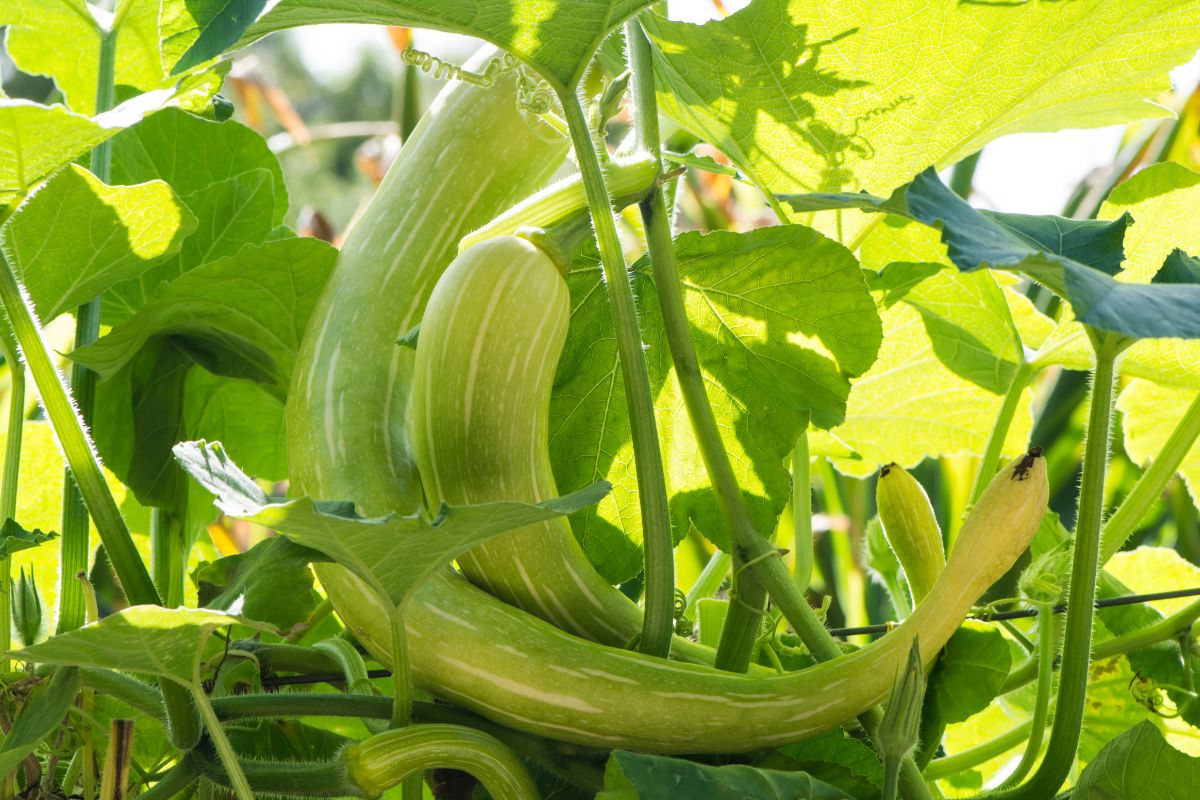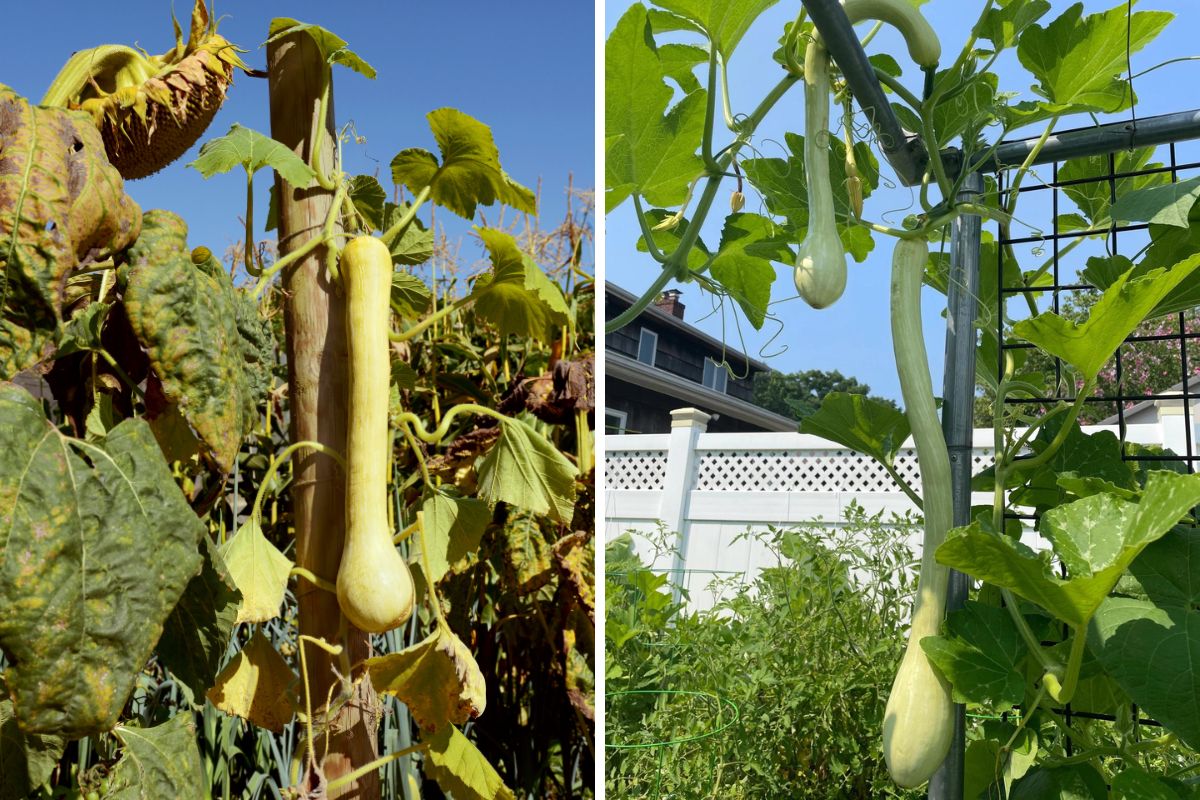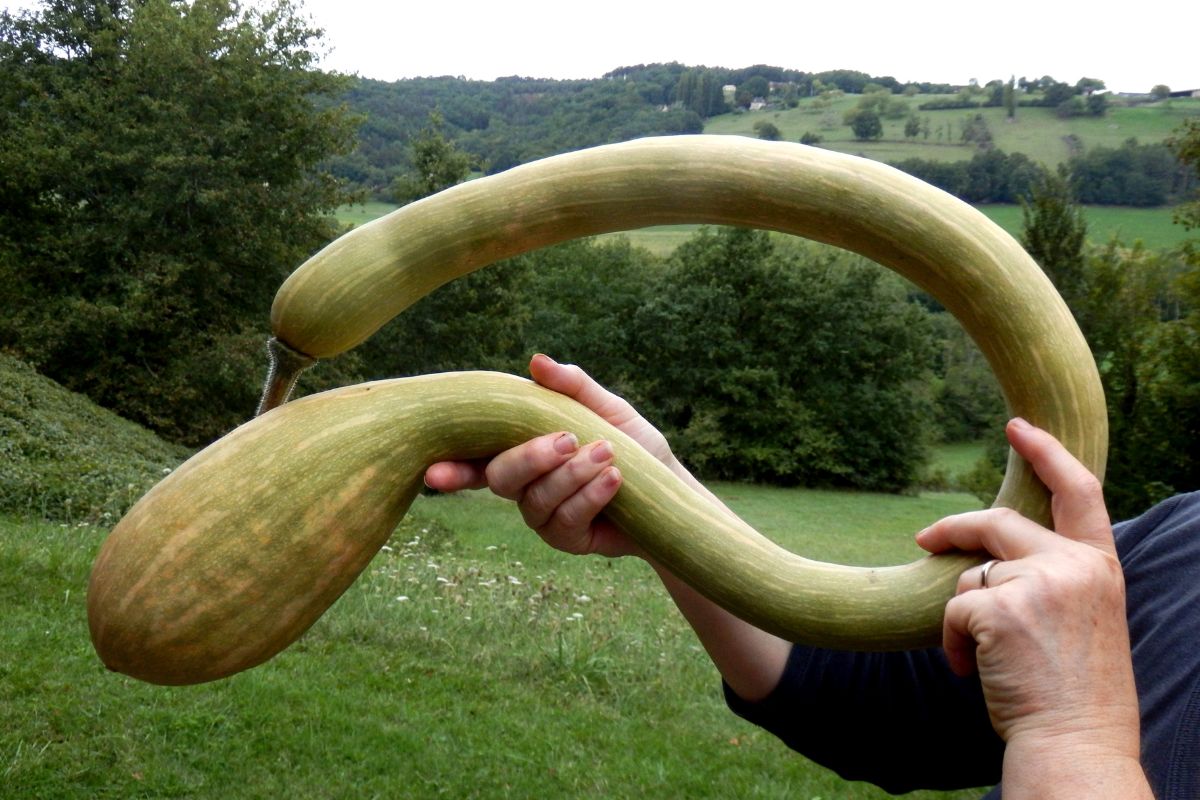If you’re planning to enter a vegetable growing contest, have many mouths to feed or are just after a conversation starter in your garden, tromboncino will not disappoint.
What is Tromboncino?
Tromboncino is an heirloom vegetable originating in Liguria, Italy, where it is also known as zuchetta, zucchetta rampicante, Tromba d’Abenga, trumpet zucchini or Serpentine squash. Though sometimes called a zucchini, botanically tromboncino is a squash or pumpkin (Cucurbita moschata), from the same species as the butternut pumpkin.
Appearance
Like many of its cucurbit cousins, tromboncino grows on a vigorous vine with large, slightly hairy, rounded green leaves. The vine produces separate male and female flowers which are large, yellow and trumpet-shaped.
Tromboncino grows huge zucchini-like fruit, sometimes up to a metre or more in length, that can either be eaten young and tender or cured and stored like a winter squash. The fruit’s pale green skin is sometimes marked with subtle white stripes when young. Like a butternut pumpkin, the fruit has a swollen end where the seeds form, meaning much of the flesh is seed-free.
If vines are left to sprawl on the ground, the giant fruit gracefully curl in on themselves as if they’re curling around something, sometimes completing an entire circle. Alternatively, with the help of gravity, if allowed to hang from a trellis they will grow long and straight. This is one veg that’s at home in the novelty vegetable section at your local exhibition!
Why Grow Tromboncino?
- For a bumper crop. Tromboncino is super productive. You can often harvest 10 to 15 large fruit from each vine.
- Easy to use. Like butternut pumpkin, the seeds of tromboncino are all located in the bulbous end of the fruit, making preparing and chopping the fruit a breeze.
- Dual purpose. Fruit can be eaten fresh in summer, like a zucchini or summer squash, or cured and stored for the winter like a pumpkin.
- Pest and disease resistance. Tromboncino is resistant to powdery mildew and some chewing pests, making it a good choice for gardeners in humid climates.
- It’s a show-stopper! If you like the weird and wonderful, tromboncino is guaranteed to stop people in their tracks as they go past your garden!
On the Other Hand…
- The vigorous vines need a large amount of room to sprawl and have been known to take over entire backyards. The simple solution is to train the vines vertically along a strong fence or trellis, but even so they are not suited to small gardens or balconies.
- For some people the flavour is just too bland. The flesh also has a higher water content than most pumpkins, making it great for fritters, steaming or mashing but too soft for roasting.
- With so many fruit you may have to resort to giving them away to friends and neighbours, or putting an honesty box outside your door. If you don’t like the challenge of a glut of fruit, maybe stick to zucchini.
Tips for Growing the Best Tromboncino
- Prepare the soil: Tromboncino are vigorous, hungry plants and they need good, rich, well-drained sunny soil to thrive. They are extremely productive if you give them the right nutrients. Enrich soil with compost or consider trench composting a few months before you plant.
- Provide a strong trellis: Vines can easily reach 1.5m high and wide, often more, so make sure your trellis is strong enough. The flowers will decorate your garden and encourage pollinators, while the fruit can hang down decoratively.
- Let the vines grow extra roots: The vines of tromboncino tend to root at the nodes (the part of the stem where the leaves emerge). These roots can provide the plant with extra nutrients and water. Train the vine along the ground in front of the trellis before letting it grow upwards; the nodes lying on the ground are likely to form ‘bonus’ roots.
- Lend a hand with pollination: Like all cucurbits, the flowers may need help with pollination, so consult this guide to give the flowers a helping hand.
- Pick fruit young: The fruit can grow more than a metre long but picking them small (25 cm long) gives the best flavour for eating them fresh in summer and also encourages the plant to produce more flowers and fruit.
- Cure fruit for storage: For winter storage, allow fruit to grow large and only harvest when the vine dies down completely (or if a frost threatens). The skin will gradually turn from green to a light tan orange and the skin will harden with age. Place the fruit in a warm, dry place out of direct sunlight for a couple of weeks before storing it. Check fruit regularly for mould.
Tromboncino in the Kitchen
When eaten fresh, tromboncino is sweeter than zucchini and the flesh has less water, so it’s less spongy. It can be eaten just like zucchini (steamed, fried or turned into zoodles), used in place of zucchini in zucchini cake recipes, or sliced thickly, battered and fried to make fritters.
Mature fruit that's been cured and stored has a taste similar to but milder than butternut pumpkin, but with a higher water content so it’s less suitable for baking. Use in any recipe that calls for butternut pumpkin, eg pumpkin soup or risotto. You can also use tromboncino as ‘fillers’ for stews and casseroles or as an eggplant alternative in pasta recipes. It adds bulk to casseroles and is a talking point for your guests.
Tromboncino flowers are also edible and can be stuffed just like zucchini flowers, with rice and herbs, ricotta and lemon zest.
The weird, curling shape of tromboncino can be modified by gravity by growing the plant on a trellis, however many gardeners believe it is this unique shape that makes tromboncino a winner!









